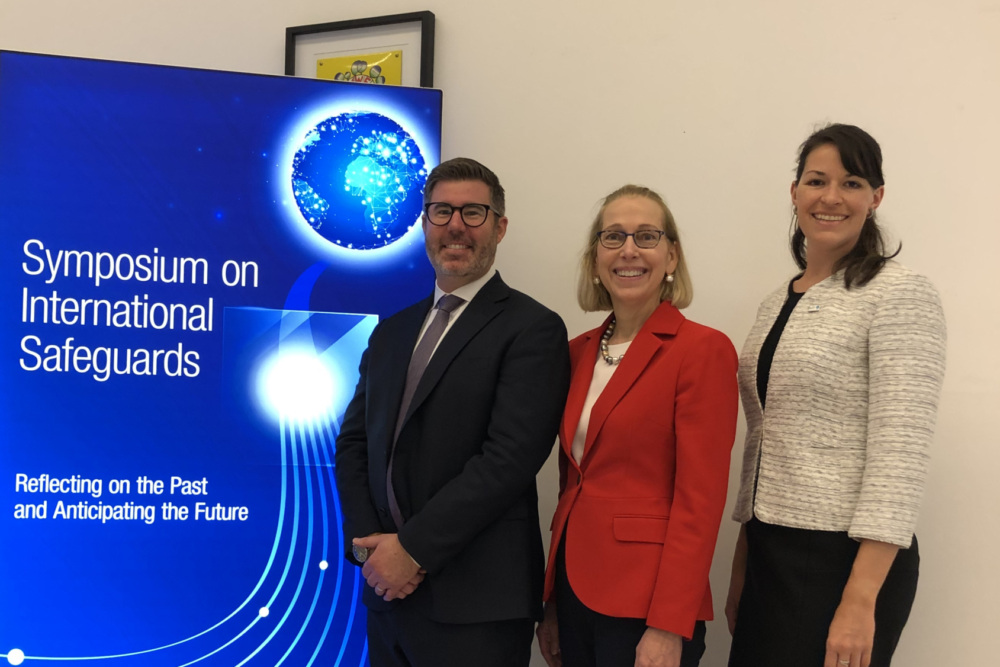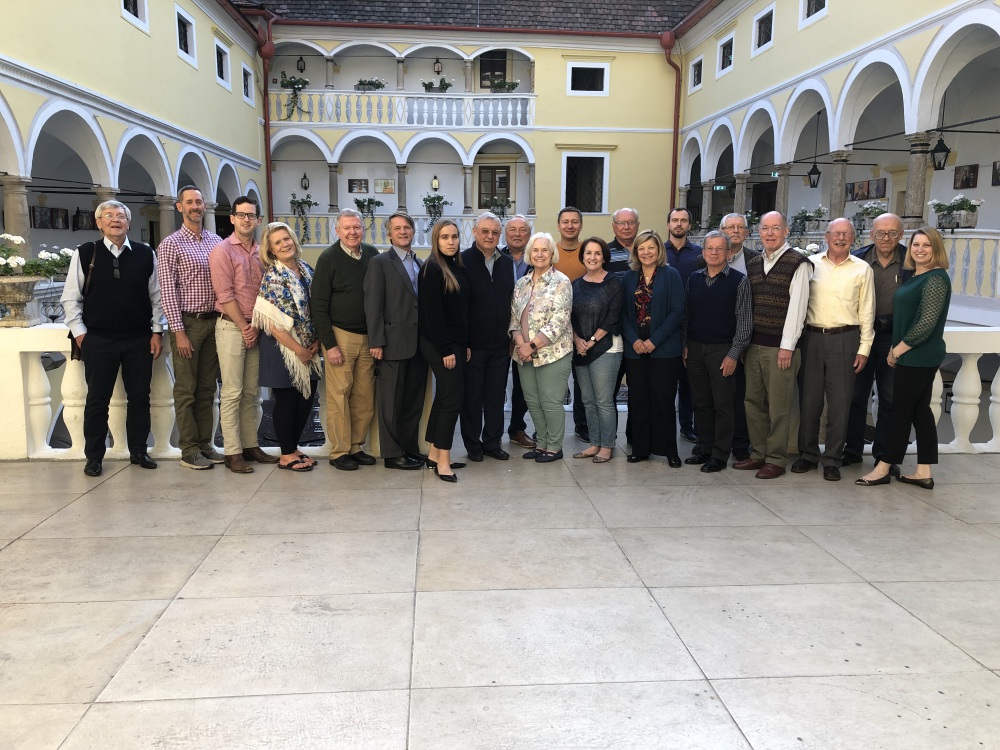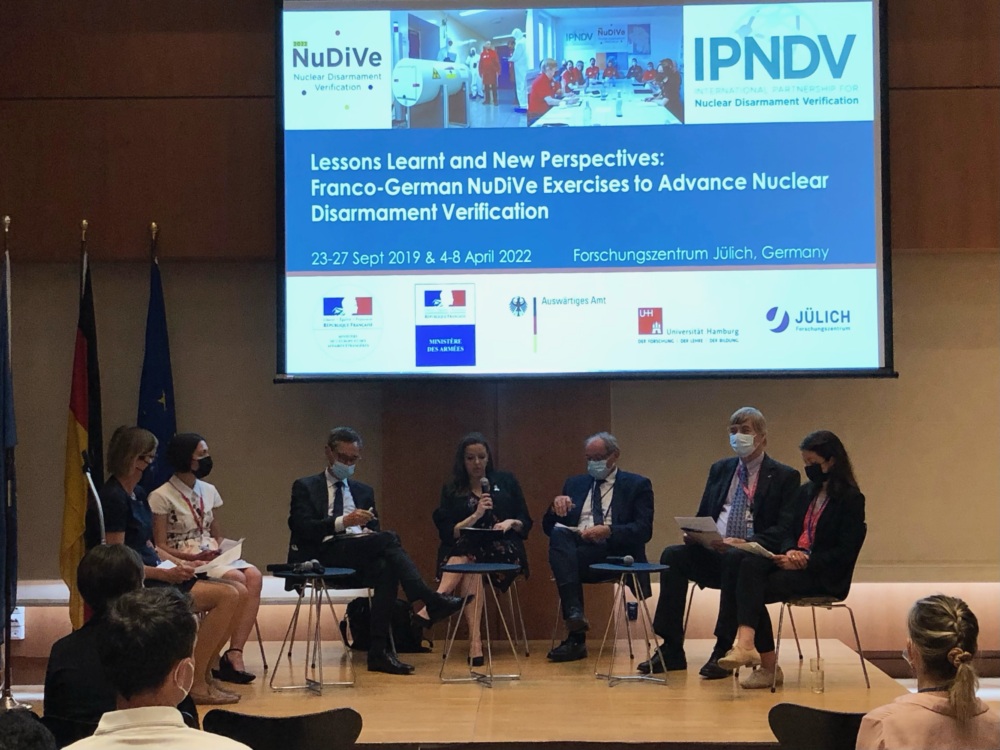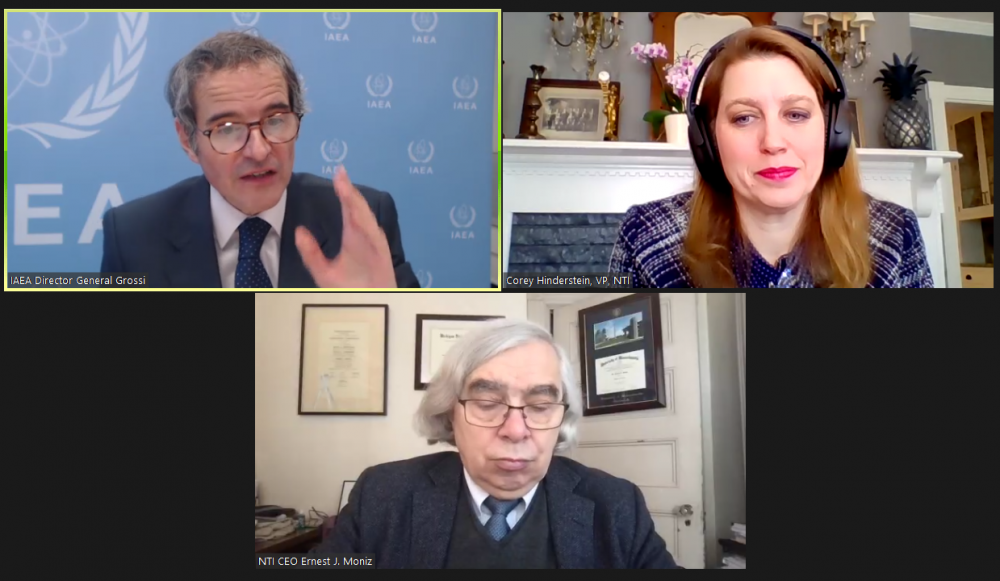
Celebrating the History of Nuclear Safeguards and Imagining The Future
NTI played a prominent role in this year’s IAEA Symposium on International Safeguards. Learn more about our what our experts were up to through this photo blog.
Atomic Pulse
This post was written by Daniel Puentes, an intern with NTI’s International Fuel Cycle Strategies team. Daniel is a Ph.D. candidate at Michigan State University, where he is studying Physics.
How best to deter the spread of nuclear weapons through the early detection of the misuse of nuclear material or technology has been a global priority since the advent of the nuclear age in 1945. A dozen years later, in 1957, the International Atomic Energy Agency (IAEA) was established as an arm of the United Nations tasked with, among other things, implementing such detection measures, known as nuclear “safeguards,” around the world. Over time, the safeguards approaches of the IAEA evolved, including in 1968 when the agency was tasked with verifying commitments made by countries under the Treaty on the Non-Proliferation of Nuclear Weapons.
Fast forward to today, the deterioration of US-Russia relations within the IAEA combined with the challenges of an evolving global nuclear energy landscape have put real pressure on the ability of the safeguards system to remain as effective as possible. Recognizing this challenge, NTI and the Moscow-based Center for Energy and Security Studies (CENESS) initiated a project in 2019 with three goals in mind:
Now, almost two years after the project was launched, four workshops with more than 20 distinguished safeguards experts from the U.S. and Russia have resulted in a joint publication titled, “The Future of IAEA Safeguards: Rebuilding the Vienna Spirit through Russian-U.S. Expert Dialogue.” Corey Hinderstein, vice president for International Fuel Cycle Strategies at NTI, and Anton Khlopkov, the founder and director of CENESS, hosted a virtual report launch event on Nov. 17. The report, comprising four articles jointly written by U.S. and Russian authors, explores different aspects of safeguards principles, implementation, and challenges. Hinderstein stressed that these articles do not belong and relate just to the U.S. or Russia, but rather that “each analytical piece reflects the shared perspective of people from both of our countries.”
As co-chairs of the project, Hinderstein and Khlopkov said that they observed wide areas of consensus and agreement during project meetings, as well as in the process of drafting the papers. Participants showed strong support for the need to improve implementation of the IAEA’s State-Level Approach (SLA), for better communication from the IAEA to both its member states and the general public, and for many other topics explored in the report.
The IAEA safeguards system has been in a state of transition as the number of facilities under safeguards grows, challenging the IAEA to develop stronger and more efficient approaches to safeguards implementation. Ambassador Grigory Berdennikov, an Ambassador-in-Residence at CENESS and the former Deputy Foreign Minister of Russia, participated in the project and co-authored “Principles and Recommendations for Implementation of the IAEA Safeguards System,” an article in the report. The article proposed a set of principles that may be shared by the U.S. and Russia for the implementation of safeguards in a way that countribues to the strengthening of the international safeguards system and the broader non-proliferation regime. During the event, Ambassador Berdennikov explained that the safeguards system needs to remain objective, depoliticized, technically sound, and understandable to states. The evolution of safeguards approaches over the years leads to a greater volume of information, which could lead to possible misinterpretation, he said, and that’s why “it is most important to provide for the transparency of verification and conclusion-drawing procedures.”
Laura Rockwood, director of Open Nuclear Network and former Section Head for Non-Proliferation and Policy in the Office of Legal Affairs at the IAEA, co-authored “IAEA Safeguards: Reaching Safeguards Conclusions.” Rockwood introduced the topic by illustrating the development of different safeguards approaches, such as the Comprehensive Safeguards Agreements (CSAs) and the Additional Protocol (AP), explaining how they were developed and their relationship with the current approach to IAEA safeguards implementation.
Rockwood addressed some of the recommendations in her article, including that the IAEA should provide information for member states about the “performance indicators used to assess the efficiency and effectiveness of safeguards implementation.” Her presentation concluded with an overview of future challenges to the IAEA safeguards system. She stressed that safeguards must remain independent, technically sound, and credible, saying “there are growing internal and external challenges to the ability of the agency to continue to provide credible assurances that states are honoring their safeguards obligations, particularly challenging in the detection and vindication of undeclared nuclear activities.” Rockwood also spoke about the benefits of a potential project to investigate developments in verification technologies.
Following a brief Q&A session, Frédéric Claude, the Section Head for Program Coordination at the Department of Safeguards at the IAEA, said the project's outcome provided stark proof that IAEA safeguards' main principles are shared and supported by the U.S. and Russia. He added that NGO-sponsored events such as the NTI-CENESS project offer a great opportunity to facilitate discussions on differences and concerns about safeguards outside of official channels. He offered the IAEA’s support for such projects and thanked the contributors for their work.
With a changing global nuclear energy environment and political differences causing a number of challenges for the IAEA’s safeguards system, collaboration and cooperation among member states will be crucial to facing these challenges head-on. The United States and Russia must be at the center of these efforts. Collaborations like the NTI-CENESS project provide the foundation for developing the future of safeguards against a changing world.
Sign up for our newsletter to get the latest on nuclear and biological threats.
NTI played a prominent role in this year’s IAEA Symposium on International Safeguards. Learn more about our what our experts were up to through this photo blog.
Diplomats and experts who met in New York last month to review implementation of the Treaty on the Nonproliferation of Nuclear Weapons (NPT) had an opportunity to learn more about a groundbreaking partnership working to pave the way for future progress on the reduction and elimination of nuclear weapons.
NTI Seminar: IAEA’s Grossi on Iran, Nuclear Security & Safety, COVID-19 and More


